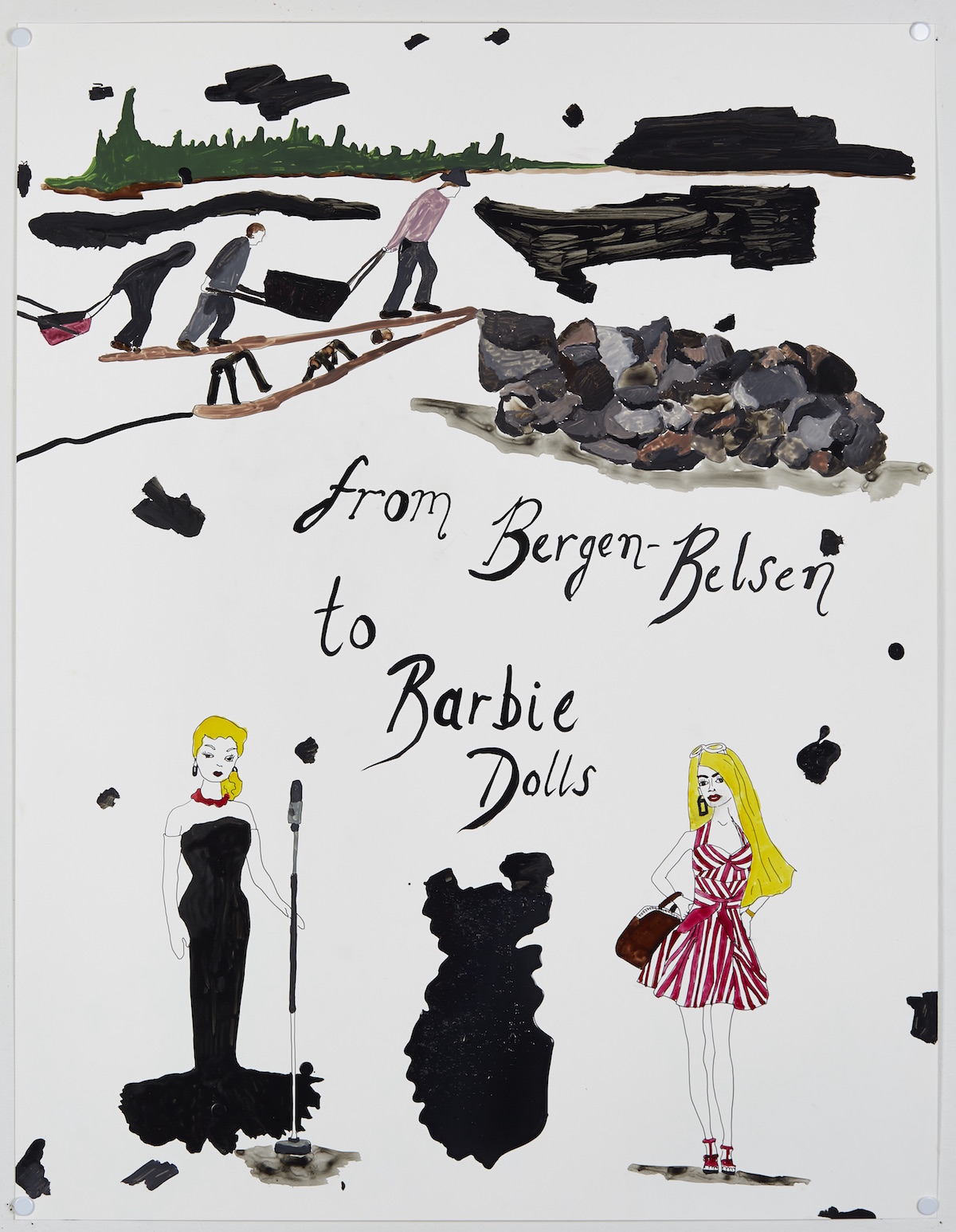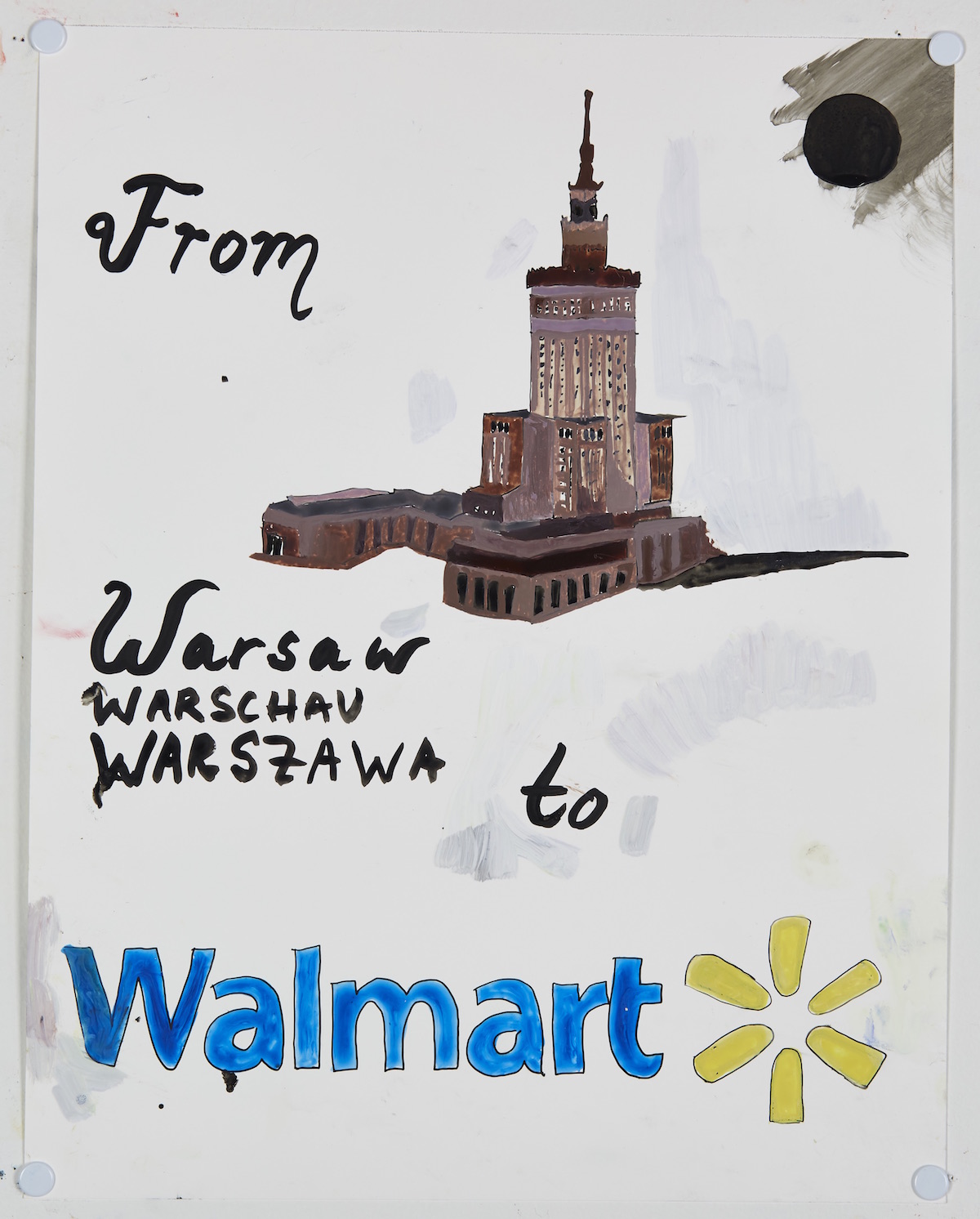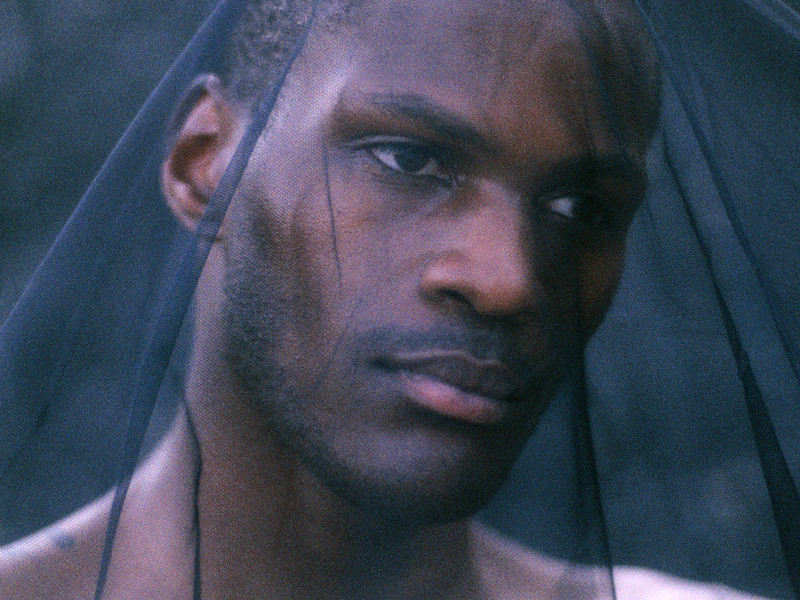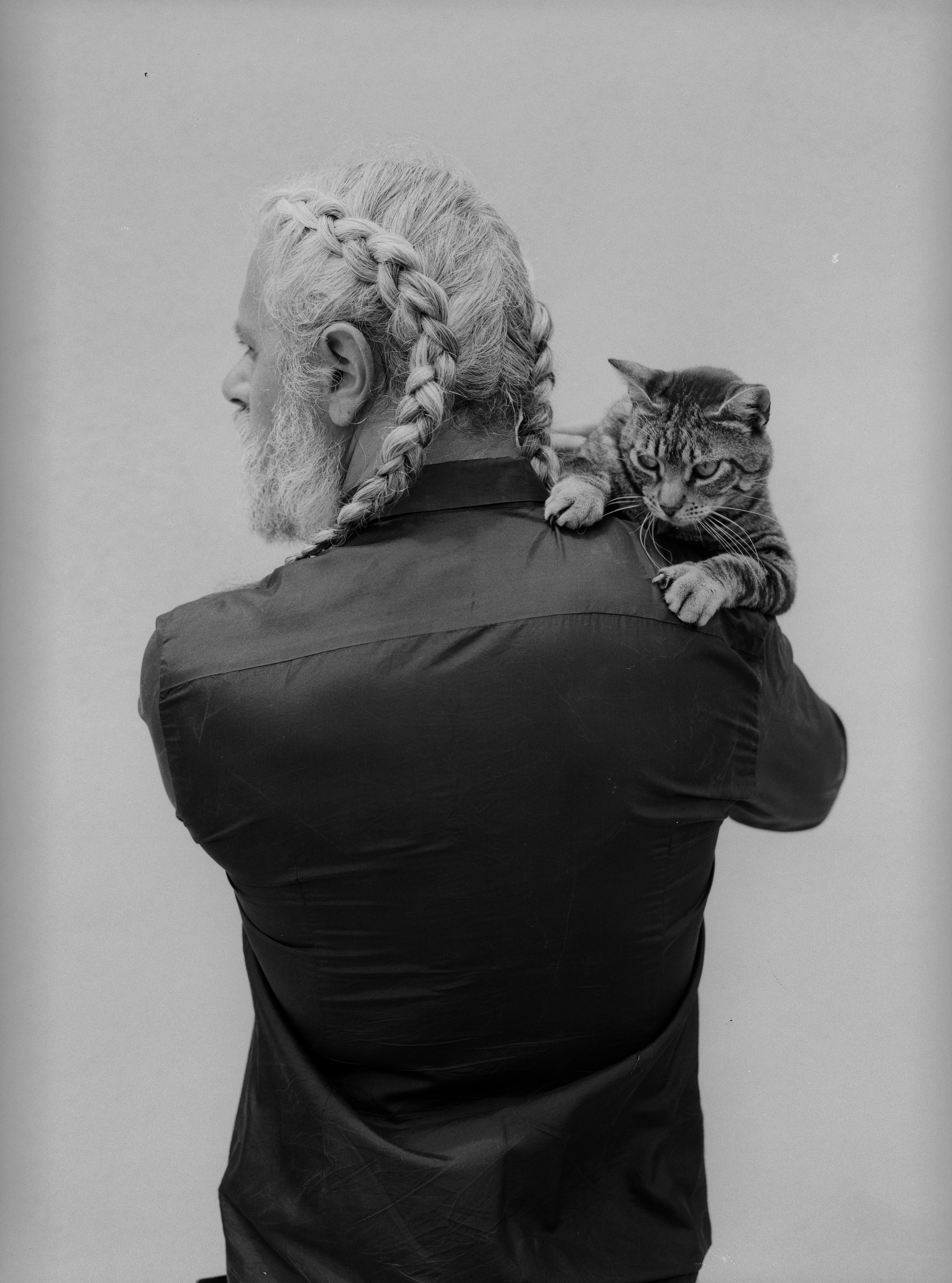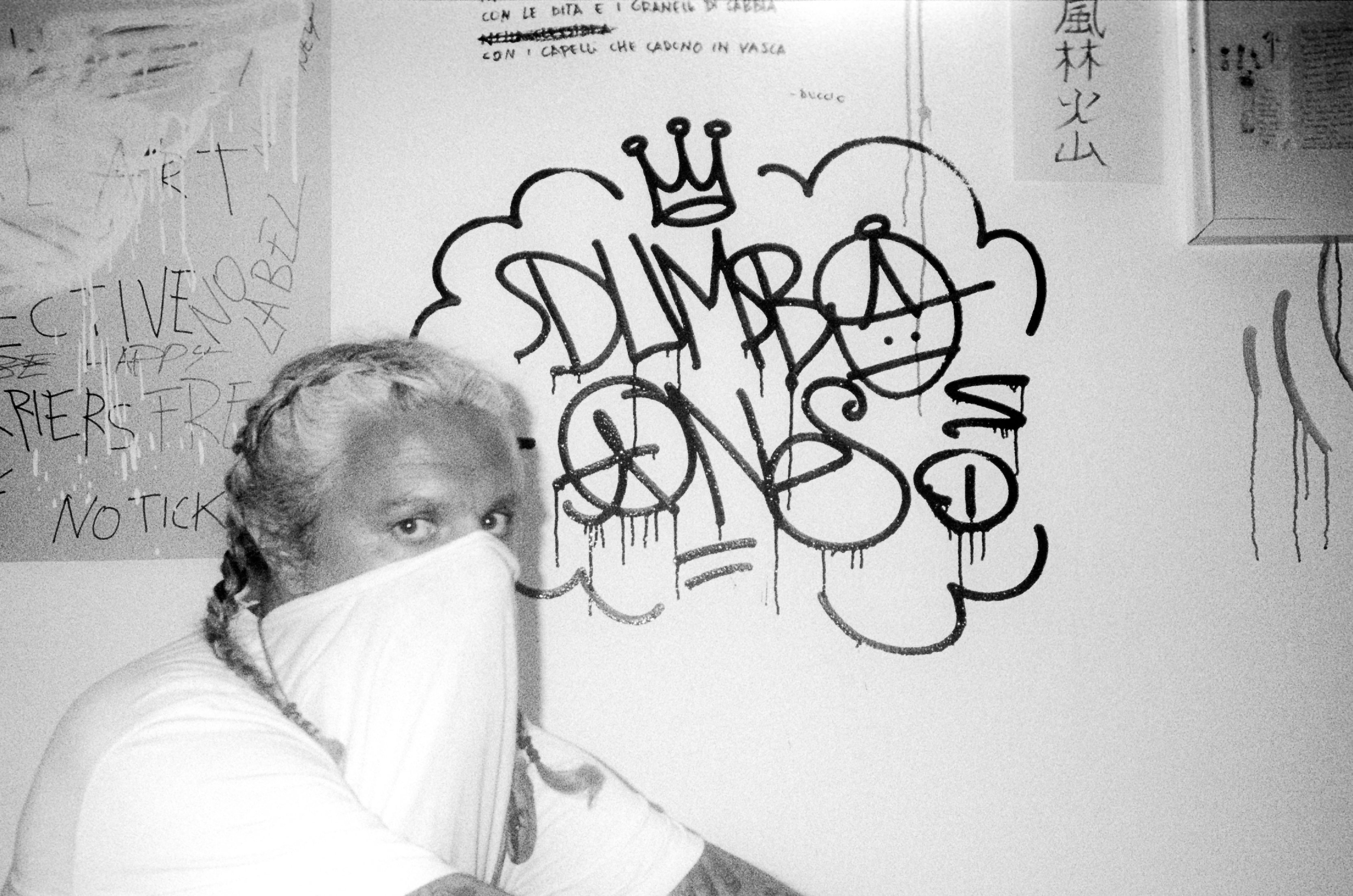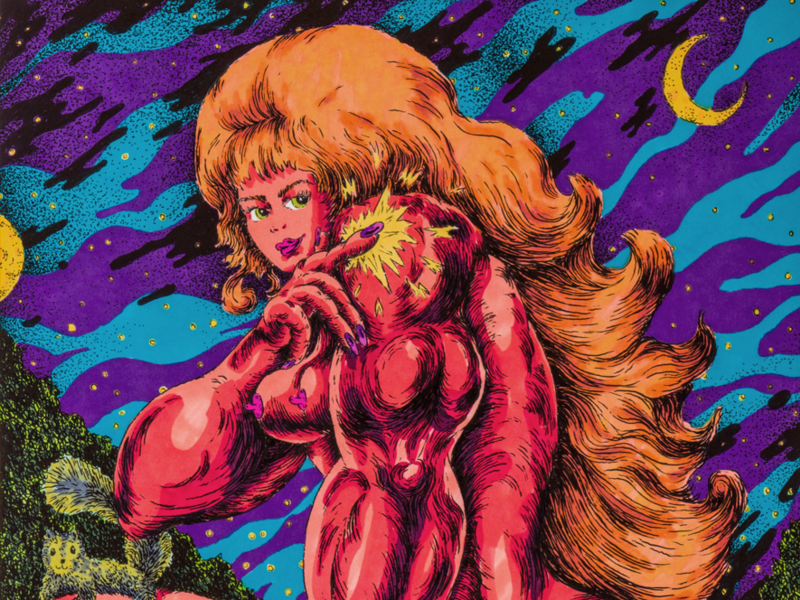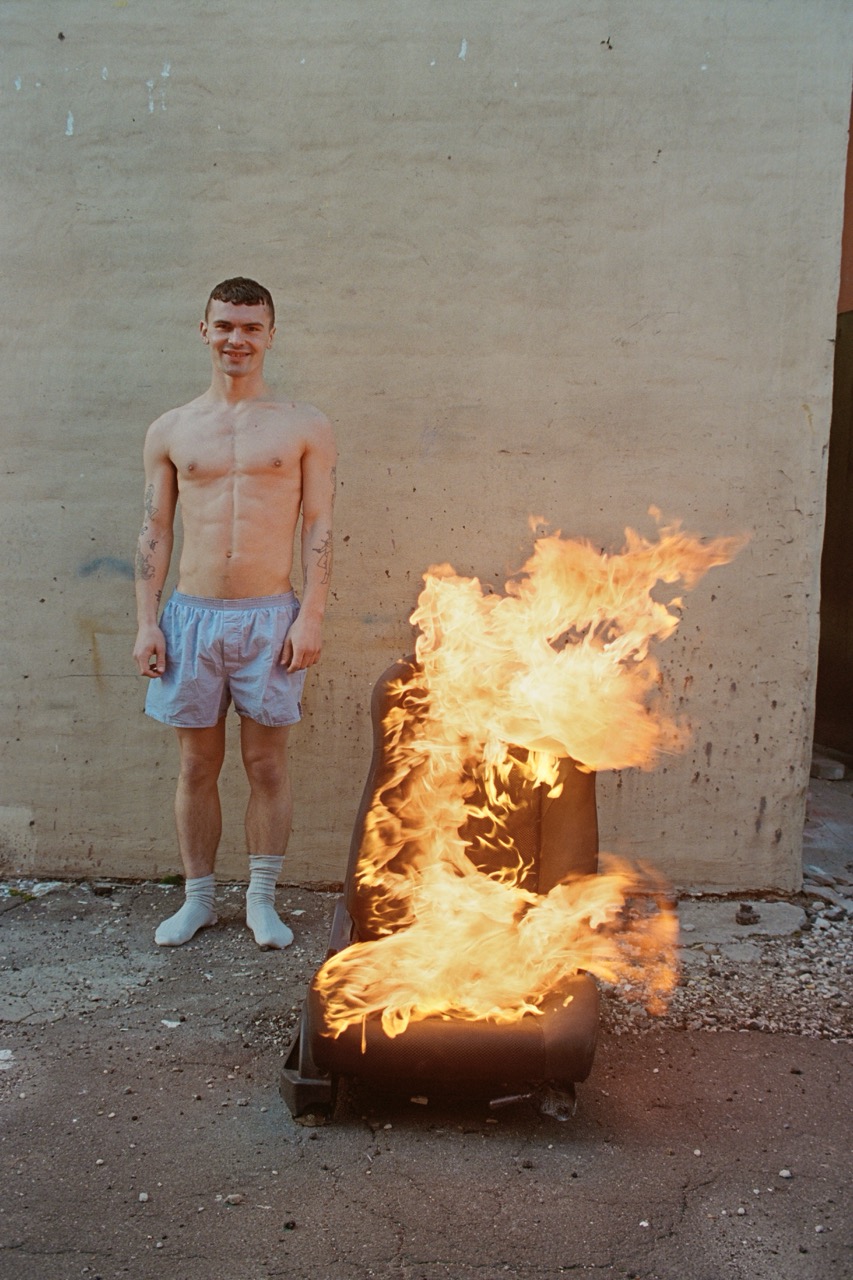Look at Rachel Libeskind

There are the pieces Libeskind knits together in her postmodern bricolage — archival photos are flexible as silkscreens. Warped by the fabric, famous faces stare at the viewer — and what can one do but stare back? Libeskind wants you to look. Despite the serious, personal and political nature of many of these works, they can also be shockingly humorous. She tells me I’m allowed to laugh.
A recent installation and performance called “The Day The Father Died,” curated by Mitra Khorasheh at tANJA gRUNERT highlights Libeskind’s flexibility. She deftly weaves together her practices, people mill about inspecting the paintings and projections on the wall, anticipating the performance to come.
When the time comes, Libeskind’s bare feet slap on concrete as she explains the Soviet Union over a recording of theatrical sobbing. She asks the crowd, “Why would authoritarian rulers love to use the idea of crying little girls? I have no idea.”


But then she goes on to explain, she does indeed have an idea. She has surrounded herself with an idea of these girls, dressed in neat white tennis skirts and red scarves, thin shapely legs marching about, performing acts of grief in braided pigtails. One plays the violin, one cleans the floor with a tangle of mops, one drops rose petals down an aisle, one makes paper airplanes and throws them from the top of the stairs, one brushes the top of my head with a sheaf of golden wheat, all while the artist herself throws bottles of ink at portraits of Stalin pinned to the clean white walls. Where factories once mass-produced posters like this, Libeskind has made these herself. The act is an homage to her grandmother, a Holocaust survivor, and her very real act of defiance against tyranny.


Do you feel a responsibility to be political in art? Does it add to the sense of urgency to produce?
To be an artist in a capitalist world is an implicitly radical act, which inherently rejects the societal categorization that capitalism rests upon. Personally, it is not my imperative to always make work which is overtly political. The politics of my existence and the topics I choose to investigate are in many ways political enough. To make work that asks people to look at the world they inhabit, or the history they represent, is political. I feel a sense of urgency to produce work that really shakes people out of their comfortable positions in society.


You mentioned the way painting is in a different realm outside other forms of art, why do you choose to engage with both painting and these other mediums? What was the process of learning these different methods of creating, how much was taught in school vs figured out along the way?
Of all of the mediums I use, painting is the only one I "learned" in school. I choose to engage with all the mediums I can because I don't want to limit myself. New mediums mean new techniques, which means new ways of conveying new ideas. My work is informed by the many mediums I like to play around with. To me, providing viewers with different forms that all speak to a single topic is a way to access more people, and more parts of them. Video is a fluid, familiar language we all now speak and understand. Video gives the viewer an immediate entrance into my visual world, and (hopefully) serves as a key for people to look back to when they feel confused or perhaps lost in my strange world they have entered. The paintings serve a similar purpose, paintings themselves are windows into another world — whether you are a well-versed consumer of art, or someone with little exposure to contemporary work, paintings are accessible as a form and give viewers a negotiating ground to examine some of the signs and symbols in the greater work.


What led to you to engage with performance art? When I think of performance art, I tend to picture this feminine/feminist trajectory, with artists like Marina Abramovic, Laurie Anderson and Carolee Schneemann. How much do you think you align/depart from this tradition?
Performing has an immediacy for the artist that no other form offers. It is flexible and immediate and strange, and forces the artist performing to confront their own selves as makers and as narrators for a larger story. Performing for me also gives me another vehicle to share my ideas — another context to explore how people react or feel about different topics, visual cues and symbols. Women are always performing in society. To be "a woman" is not a biological distinction, but rather a performative one. The way we are conditioned to dress, to smile, to cover our mouths when we laugh too hard, to walk, to strut, to bat our eyelashes, to kneel, to be modest, to be sexy, to be desirable, to be easy-going, and so on and so forth. Our lives as women are full of a constant, shifting performance. I think that is why women show up as performance artists, ready to go, having trained their entire lives in the performance of self.
Check out some more of Rachel's recent work, from her show at NYC's New Release Gallery in October 2017, below.

